Standards related glove manufacturing and technologies
The glove manufacturing business is vital in a variety of industries, including healthcare, food processing, and industrial safety. Given their widespread use, gloves must meet stringent safety, quality, and environmental requirements. These standards not only govern manufacturing operations, but they also influence technological improvements in design, testing, and sustainability. This blog digs into the standards that govern glove production, their significance, and the cutting-edge technology that drives the industry ahead.
Understanding the Importance of Standards in Glove Manufacturing
Standards are frameworks created to ensure that products meet specific safety, performance, and quality standards. These criteria enable manufacturers to create trustworthy and safe gloves for a variety of applications, including surgical procedures and chemical handling.
Key benefits include:
Enhanced Safety: Gloves that comply with standards protect users against mechanical, chemical, biological, or thermal hazards.
Global Acceptance: Adherence to international standards like ISO or ASTM facilitates trade and regulatory approval in global markets.
Consumer Confidence: Certifications and compliance build trust among users, highlighting reliability and quality.
Overview of Major Standards Governing Glove Manufacturing
A. ISO Standards (International Organization for Standardization)
1. ISO 9001: Quality Management Systems
Focus: Consistency in production quality through efficient management processes.
Application: Ensures that gloves meet customer and regulatory requirements with continual improvement.
2. ISO 13485: Quality for Medical Devices
Focus: Safety and efficacy for medical-grade gloves.
Application: Requires rigorous documentation, risk management, and adherence to sterile manufacturing conditions.
3. ISO 374: Protective Gloves Against Chemicals and Microorganisms
Focus: Protecting users from hazardous chemicals and biological risks.
Application: Testing gloves for penetration, degradation, and permeation under different conditions.
4. ISO 14001: Environmental Management
Focus: Sustainable manufacturing practices.
Application: Encourages reducing waste, minimizing emissions, and adopting eco-friendly materials.
B. EN Standards (European Norms)
1. EN 455: Medical Gloves for Single Use
Focus: Safety and reliability for single-use gloves.
Covers: Freedom from pinholes (Part 1), physical properties like tensile strength (Part 2), shelf life (Part 3), and biocompatibility (Part 4).
2. EN 388: Protective Gloves Against Mechanical Risks
Focus: Evaluates abrasion, cut, tear, and puncture resistance.
Application: Widely used for industrial safety gloves.
3. EN 407: Thermal Hazards
Focus: Performance under extreme heat and fire conditions.
C. ASTM Standards (American Society for Testing and Materials)
1. ASTM D3577 and D3578
Focus: Standards for surgical and examination gloves.
Application: Specify tensile strength, elongation, and tear resistance requirements.
2. ASTM D6319
Focus: Nitrile gloves' physical performance, ensuring durability and barrier integrity.
3. ASTM D5151
Focus: Detection of pinholes to ensure glove impermeability.
Testing Methods and Quality Assurance
To ensure compliance with these standards, gloves undergo rigorous testing. Some common methods include:
Chemical Resistance Testing
Glove materials are exposed to chemicals, and their resistance is measured in terms of permeation (chemical breakthrough), degradation (physical changes), and penetration (leakage).
Mechanical Testing
Standards like EN 388 and ASTM D3577 require tests for abrasion, cut, tear, and puncture resistance to assess physical durability.
AQL Testing
The Acceptance Quality Limit (AQL) testing determines the allowable defect percentage in a batch. Medical gloves typically have stricter AQL limits compared to industrial gloves.
Biocompatibility Testing
Gloves are tested for skin irritation and sensitization to meet ISO 10993, ensuring safe use in medical and prolonged contact scenarios.
Technological Advancements in Glove Manufacturing
Standards not only drive compliance but also foster innovation in glove production. Some key advancements include:
A. Material Innovations
Biodegradable Gloves: Manufacturers are developing gloves that decompose faster, addressing environmental concerns and aligning with ISO 14001 standards.
Powder-Free Gloves: With the FDA banning powdered gloves in medical use, alternatives like chlorination ensure ease of donning without safety risks.
B. Enhanced Coatings and Textures
Modern gloves feature micro-textures, honeycomb patterns, or polymer coatings to improve grip, especially for industrial or medical applications.
C. IoT-Enabled Gloves
Smart gloves with integrated sensors monitor safety parameters, such as temperature and exposure to harmful substances, making workplaces safer.
D. Advanced Dipping Processes
Automation and precision in dipping lines ensure consistent glove thickness, reduced waste, and faster production times.
Challenges in Meeting Standards
Despite technological progress, manufacturers face several challenges:
Raw Material Variability: Natural rubber quality can fluctuate due to environmental conditions, making it harder to meet performance standards.
Sustainability Requirements: Meeting eco-friendly benchmarks like ISO 14064 while maintaining affordability can be challenging.
Regulatory Complexity: Adapting to evolving standards, such as the EU’s Medical Device Regulation (MDR), requires agility and significant investment.
Conclusion
Standards like ISO, EN, and ASTM are the bedrock of the glove manufacturing industry, ensuring safety, quality, and environmental responsibility. Meanwhile, technology continues to enhance manufacturing processes, making gloves safer, more durable, and environmentally sustainable. By staying ahead in compliance and innovation, manufacturers can build trust, meet global market demands, and contribute to a safer and greener future.
The glove industry’s success lies in its ability to blend rigorous standards with cutting-edge technologies, delivering products that not only meet but exceed expectations.

